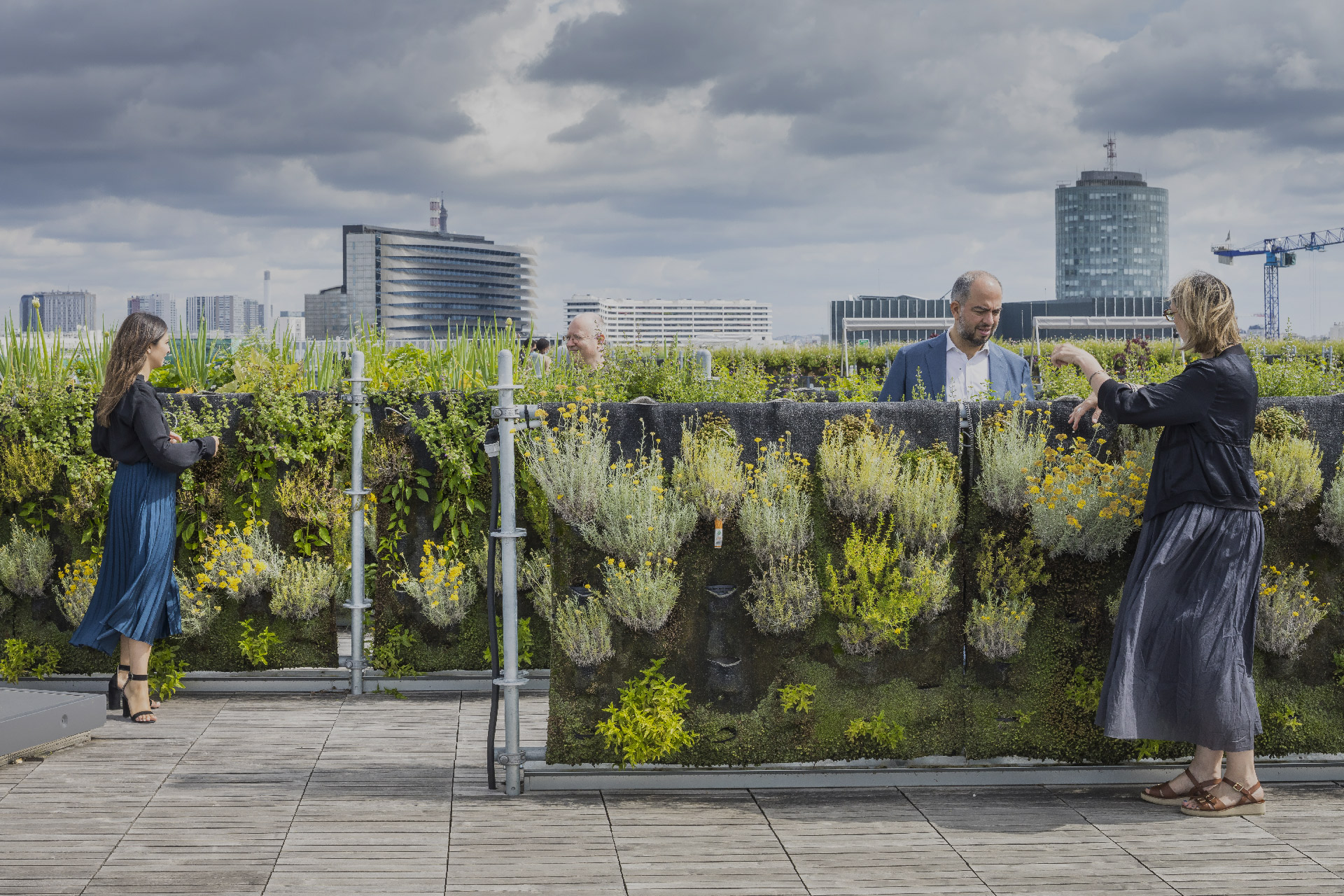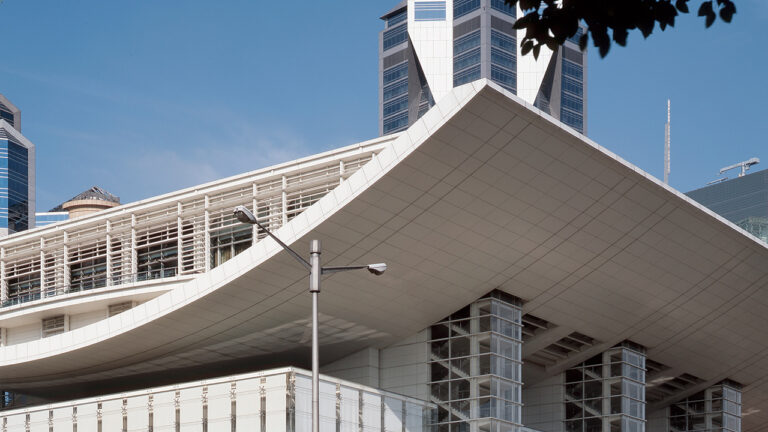
As part of the National Architecture Days, the Arte Charpentier teams welcomed the public to discover two of the firm’s flagship projects: the refurbishment of the Sequana building in Paris and the construction of the Arsenal tower in Dijon. Antonio Frausto, in his role as associate architect, looks back on this experience, stressing the importance of exchanges with visitors, both to enrich his architectural practice and to nurture the collaborative dynamic within the firm.

Two Iconic Projects Showcased
Sequana, Paris: Modernizing While Respecting the Past
Designed and delivered by Arte Charpentier in 2003, the Sequana building is now undergoing a bold transformation. “The departure of key tenants, such as Natixis, to new locations like the Duo Towers triggered the opportunity to modernize Sequana,” Antonio Frausto explains. “The challenge was to meet new thermal performance standards while adapting the building to current work practices—all without altering its exterior envelope, which has aged remarkably well.”

Key improvements include reorganizing access points to create a single, generous entryway on the garden level, centralizing services such as dining, fitness, meeting rooms, and a recording studio. “The goal was to design a multifunctional, lively space that meets today’s needs,” Frausto says.
Greenery is another cornerstone of the project, with plants integrated at every level and an ambition to earn the BiodiverCity label. “We carefully selected plant species that promote biodiversity while minimizing water use and maintenance,” he adds. A rooftop transformation crowns the building, offering a spectacular view of Paris alongside smartly designed, connected outdoor workspaces.
Sustainability is also central to the approach. “Working with Covéa Immobilier, a key player in circular economy initiatives, we implemented an ambitious reuse strategy,” he notes. “For example, part of the original stone flooring has been recycled into terrazzo, used in the garden level and floor landings.”
Elithis Arsenal, Dijon: A Positive Energy Vision
The Elithis Arsenal Tower represents a groundbreaking effort to create Dijon’s first positive-energy residential block. “It’s a bold and exemplary project, pushing the boundaries of energy performance while keeping costs in check,” Frausto explains.

The project’s energy efficiency features include double-layered rock wool insulation, high-performance windows, and external sunshades to reduce heat gain in summer. “Every apartment is equipped with home automation technology, allowing residents to manage their energy consumption individually,” he says.

Energy production relies on photovoltaic panels installed on rooftops and in car park structures. “Initially, we planned for a fully photovoltaic south façade, but regulatory challenges led us to prioritize new-generation rooftop panels with exceptional efficiency,” Frausto shares. The surplus electricity is sold back to the grid, and the resulting profits are used to lower residents’ utility costs. “This shows how sustainable architecture can have a tangible, positive impact on daily life.”

Engaging with the Public: Mutual Learning
For Frausto, the National Architecture Days are a unique and invaluable opportunity. “In our work, we mostly interact with specialists: our clients, technicians, engineers… Speaking to the general public changes everything. These encounters help us understand their expectations, concerns, and desires, which is incredibly valuable for an architect.”
He also emphasizes the importance of making complex technical aspects of their projects understandable. “We have a duty to educate: to simplify and make information accessible so that everyone can grasp the challenges and solutions we’re working on.”

Perspectives: Architecture for Tomorrow
These exchanges fuel a broader reflection on the future of architecture and its societal role. “Building the city within the city is an ecological imperative. We must rethink our practices to densify intelligently and limit land artificialization. Every project, whether it’s a rehabilitation like Sequana or a new development like Elithis Arsenal, is an opportunity to contribute to this transition.”
Antonio Frausto also highlights the importance of collaboration and openness: “Close collaboration with residents, integrating their needs and ideas from the early design phases, is crucial. Likewise, interdisciplinary approaches are essential to bring innovative and relevant solutions in an increasingly complex world.”

The Benefits for a Firm Like Arte Charpentier
Finally, these visits benefit the firm as well. “They strengthen our culture of openness and sharing. It pushes us to step outside our certainties, listen, and engage with different perspectives. This collective emulation enriches our practices and makes us better at fulfilling our mission,” Frausto concludes. Through these initiatives, Arte Charpentier firmly positions itself as a collaborative and committed firm, dedicated to a sustainable and human-centered architectural vision.

Special thanks to the project teams who helped make these two operations a success:
Antonio Frausto, Jérôme Van Overbeke, Carole Azzi, Christian Atry, Michel Mourlot, Michel Katseli, Jérémy Delahaie, Nazim Belblidia, Guillaume Delfesc, Nathalie Leroy, Soizic Kenfort, Stéphane Quigna, Clémence Rabin Le Gall, Léa Blanc, Sarah Farsy, Lola Richard, Jasmine Frossard, Elodie Plotton, Georgina Marques, Hélène Derboule, Marie-Aline Tarrieu, Sylvie Wauquier.
-

Antonio Frausto Associate Architect,
Architecture Director
EDUCATION
DPLG Architecture Diploma with jury’s congratulations – School of Architecture, UNAM, Mexico (2002)
Visual Arts studies – UNAM, Faculty of Arts & Design (1992-1994)
TEACHING
École Nationale des Ponts et Chaussées, since 2007
Pedagogical Director at the École d’Art Américaine in Fontainebleau, since 2006
CONFERENCES
National Autonomous University of Mexico, UNAM
Hong-Ik University, Seoul, South Korea
Paris- Belleville School of Architecture
École d’Architecture de la Ville et des Territoires in Marne-la-Vallée
Higher Institute of Civil Engineering, ESTP
JURY
Agora d’Evry / public facilities
Wellbuilding 2050 international competition
EXTRA-DISCIPLINARY ACTIVITIES
Administrator for AFEX (French Architects Overseas)
Head of Latin-American working group























